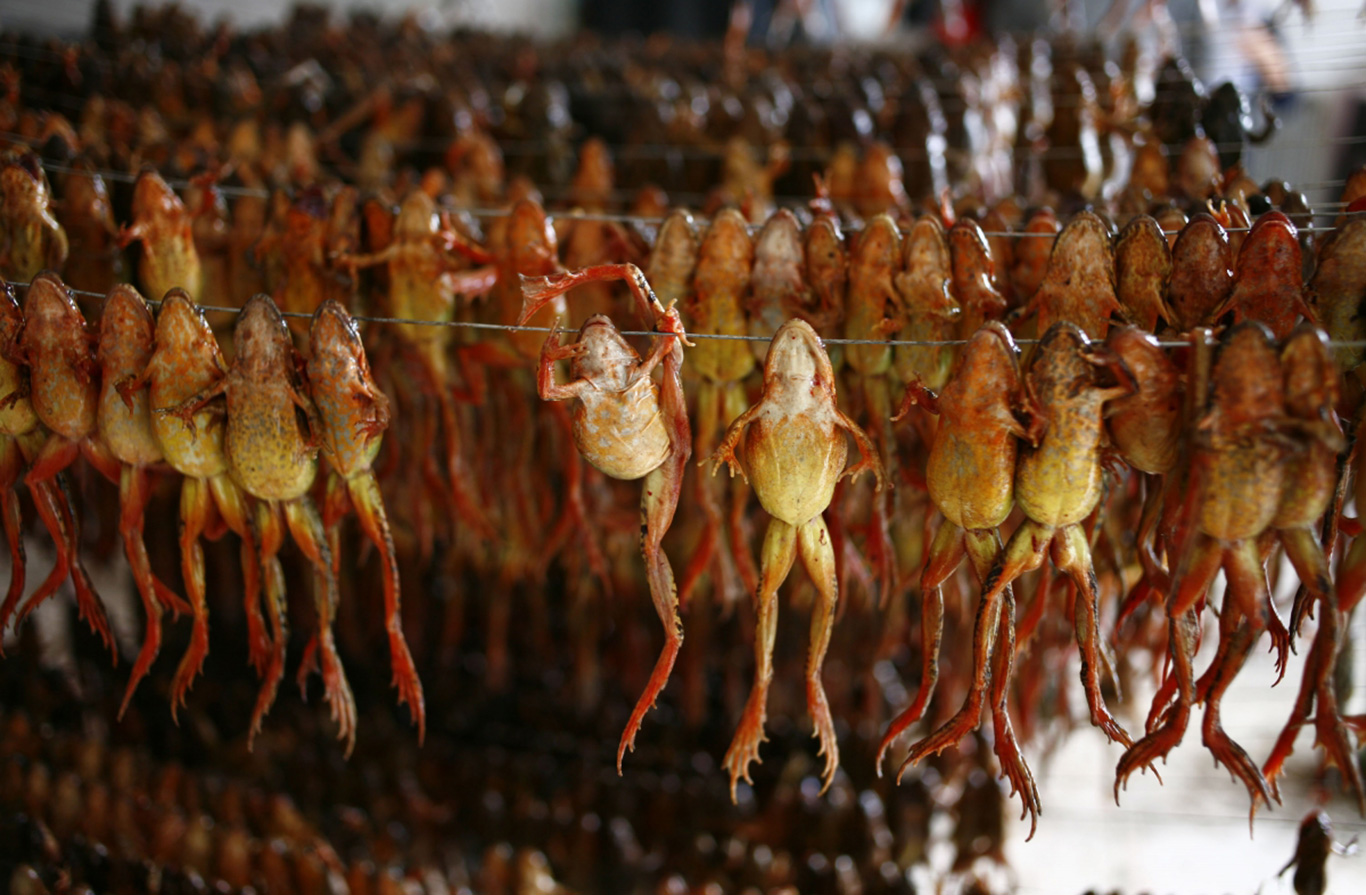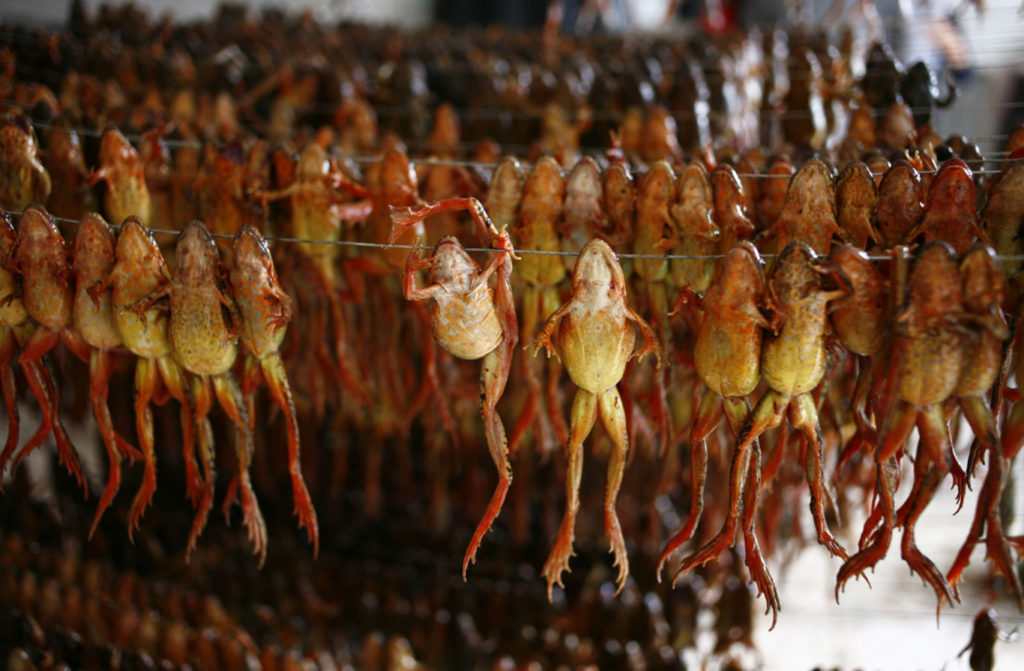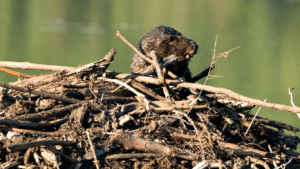Imagine being forced from your home and taken to a place of torture. Imagine your arms and legs hacked off while you are still alive. Imagine watching the same fate happen to your friends and family. Imagine being left for hours to suffer, while your killer laughs with no remorse. For frogs, this horror is real.
As you read this, millions of frogs across the world are being tortured, maimed, and killed. Deprived of everything that is natural and important to them, they languish in pain, ache with loneliness, and long to be free. These uniquely beautiful creatures need our protection now more than ever before. ASI will continue to go out on a limb to stop frog cruelty once and for all!
Leaked video footage in Cambodia shows frogs at markets kicking and squirming in pain as their rear legs and snouts are cut off with scissors. Still alive, they are thrown in a pile of other maimed frogs and left to endure a slow death. In their harrowing moments, you can see the creatures’ eyes blinking back at the camera while their killer laughs in the background. These frogs are not only massacred for their legs, but they are also turned into trinkets and curios for the tourist industry.
In Laos, tiny rice paddy frogs are dipped into boiling oil, fried alive on sticks, and eaten whole as “snacks” – their little bones and all. Or they are plopped into a blender and liquidized before being added to curries and stews, boiled in soups or barbecued on an open flame.
In Vietnam and Japan, live Bullfrogs are served up filleted with their hearts still beating and their limbs still flailing. Large volumes of these frogs are caught after the first heavy rains of the wet season when some species emerge following a six-month hibernation period. Inhumane methods are used to capture them, from nets, hooks, and spears.
In China, Asiatic grass frogs - a protected amphibian species – are butchered for use in traditional medicine. Hasma is made with the fallopian tubes of dried-up female frogs and is supposed to help consumers “look younger”. It is estimated that between 180 million to a billion frogs are currently collected from the wild in Asia alone each year for use in traditional medicine.
In Europe and the United States, an exploding exotic pet trade sees glass frogs plucked from tropical rainforests and stuffed into tiny glass containers, destined for the pet trade. Of all the enchanting creatures Mother Earth boasts the glass frog is truly one of the most breathtaking. Glass-like, its undersides are transparent. So much so, you can see their organs. Because the skin on its stomach is so thin, glass frogs are particularly sensitive to changes in the environment. The capture, transport, and confinement of this delicate creature is an often brutal and cruel business, causing untold suffering and death. Many frogs die before reaching their final destination and those that don’t die later perish from the long-term effects of capture and transport.
Across the world, aquatic African clawed frogs, semiterrestrial bullfrogs and terrestrial toads are still used in classroom dissections and teaching exercises in a harrowing process known as “pithing”. Pithing leaves the frogs' defenseless while students cut them open, apply drugs to their beating hearts, and attach electrodes to their exposed leg muscles after peeling off their skin.
“The methods of torture that these frogs endure so they can be devoured alive, used in traditional medicines, dissected, and oppressed in the exotic pet trade - is an outrage. Amphibians possess neuro-anatomical pathways conducive to a complete nociceptive experience. Simply put, this means that frogs are fully capable of feeling pain,” said ASI’s Sarah Morris. “The abuse of frogs is exacerbating the already dire situation for many wild populations. We all have a responsibility to ensure that frogs are protected.”
Amphibians globally are facing a growing crisis, with between a third and one-half of all known species threatened with extinction.
Cruelty aside, new potentially deadly zoonotic diseases that can be transmitted to humans are emerging with alarming frequency and many of them originate in wild animals. Throughout the world, public health agencies have recognized that the disease risks posed by exotic pet trade are serious and substantial.
Every single life on earth is deserving of protection. Every time you say no to frog cruelty, you save these living creatures from a terrifying death and you make a difference for our planet. The tragic plight of the frog can no longer be ignored.






